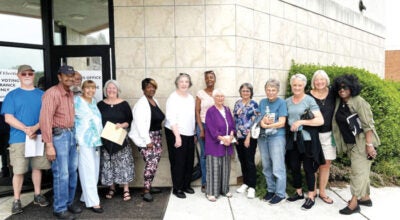Editorial: Help teens, help courts
Published 12:00 am Friday, May 16, 2008
In the interest of putting more money in dropout prevention, they said, Rowan County Commissioners voted recently to divert money that usually goes to Teen Court to a different program: Community in Schools. Officials with Communities in Schools can use all the money they can get; it’s a wonderful program. But commissioners might want to reconsider. There’s a lot to be said for imprisonment prevention, too.
That, essentially, is one of the aims of Teen Court. In this special setting ó and outside the traditional court process ó first-time offenders between the ages of 11 and 18 get a chance to admit responsibility for their offenses and receive constructive sentencing from other teens ó community service, jury duty, restitution and other possible sanctions. Their crimes are misdemeanors, and they have to be referred to the program by a court counselor or school resource officer.
Last year, 36 young defendants went though Teen Court. That doesn’t sound like a lot, but that’s 36 cases that didn’t have to bog down the already over-burdened court system and the juvenile justice system ó well worth the $21,527 the Youth Services Bureau was hoping to run the project with for the next year. Teen Court also involves dozens of teen volunteers who act as jurors and attorneys, all under the watchful eye of adult professionals. It’s a valuable learning experience for them all.
Nationwide, more than 80 percent of first-time offenders accept responsibility for their actions and complete their Teen Court sentence, advocates for the program say. That, too, is worth $21,527.
The money in question is not county tax money; it’s part of a $200,000-plus state juvenile justice grant that funnels through the county. The Youth Services Bureau, a United Way agency, receives such funding for several of its programs through the county. But this $21,527 was the only money that funded Teen Court.
The commissioners’ decision came as a surprise to Karen Carpenter, head of the Youth Services Bureau, and to members of the board that makes recommendations on how to allocate juvenile justice funds, the the local Juvenile Justice and Prevention Council. The council weighed proposals from Teen Court, Communities in Schools and other programs and gave the county a recommendation on how to divide the funds. “We have no idea why they changed it,” says Jim Mallinson, a member of that body. “These people really look at what are best practices and how to spend the money the best way, with diverting youths from the courts system as the first priority. He and other council members “are very concerned as to why there wasn’t any communication with the board.”
Communication with other boards is a recurring theme with county commissioners ó as well as every other elected body in the land. Rowan commissioners have a chance Monday to open up the lines of communication with the juvenile justice council and debate this issue more fully in public. Teen Court deserves a chance to present its case.


